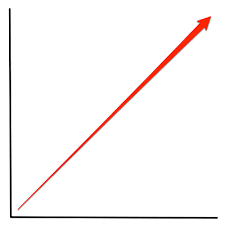Second charge lending has returned to pre-pandemic levels with 59% growth on the number of new agreements, according to latest figures published by the Finance & Leasing Association.
The number of new agreements rose to 2,660 and the value of new business was 70% higher at £119m compared to February 2021.
On an annual basis, second charge lending rose by 72% by volume and 80% in value in the year to February.
Fiona Hoyle, director of mortgage finance and inclusion at the FLA, said: “In February, the second charge mortgage market reported its highest monthly level of new business volumes for two years and has now returned to pre-pandemic levels of new business by both value and volume.
“As consumers face higher prices and pressure on disposable incomes, any customer worried about meeting payments should speak to their lender as soon as possible to find a solution.”
Latest News
-
Targeted support applications to open from March 2026
-
19 firms join forces to launch new retail investment campaign
-
Four in five bridging professionals confident about 2026 market outlook
-
Söderberg & Partners invests in UK group rockwealth
-
SME lending grows again in Q3 – UK Finance
-
Titan Wealth acquires Morgans Ltd
Perenna and the long-term fixed mortgage market

Content editor, Dan McGrath, spoke to head of product, proposition and distribution at Perenna, John Davison, to explore the long-term fixed mortgage market, the role that Perenna plays in this sector and the impact of the recent Autumn Budget
The role of the bridging market and technology usage in the industry
Content editor, Dan McGrath, sat down with chief operating officer at Black & White Bridging, Damien Druce, and head of development finance at Empire Global Finance, Pete Williams, to explore the role of the bridging sector, the role of AI across the industry and how the property market has fared in the Labour Government’s first year in office.
NEW BUILD IN FOCUS - NEW EPISODE OF THE MORTGAGE INSIDER PODCAST, OUT NOW

Figures from the National House-Building Council saw Q1 2025 register a 36% increase in new homes built across the UK compared with the same period last year, representing a striking development for the first-time buyer market. But with the higher cost of building, ongoing planning challenges and new and changing regulations, how sustainable is this growth? And what does it mean for brokers?
Does the North-South divide still exist in the UK housing market?

What do the most expensive parts of the country reveal about shifting demand? And why is the Manchester housing market now outperforming many southern counterparts?
In this episode of the Barclays Mortgage Insider Podcast, host Phil Spencer is joined by Lucian Cook, Head of Research at Savills, and Ross Jones, founder of Home Financial and Evolve Commercial Finance, to explore how regional trends are redefining the UK housing, mortgage and buy-to-let markets.
In this episode of the Barclays Mortgage Insider Podcast, host Phil Spencer is joined by Lucian Cook, Head of Research at Savills, and Ross Jones, founder of Home Financial and Evolve Commercial Finance, to explore how regional trends are redefining the UK housing, mortgage and buy-to-let markets.
© 2019 Perspective Publishing Privacy & Cookies











Recent Stories